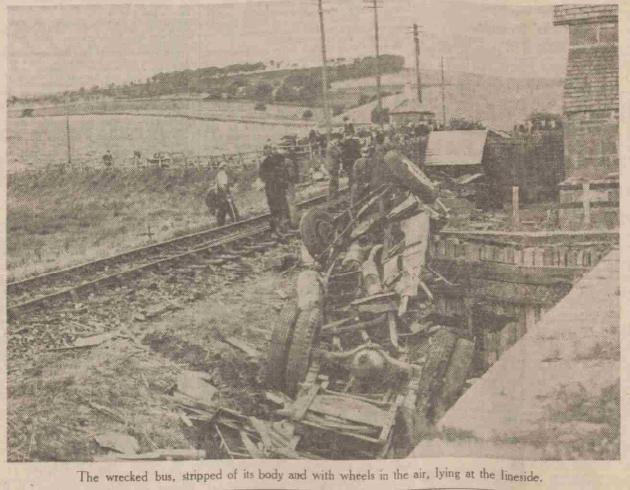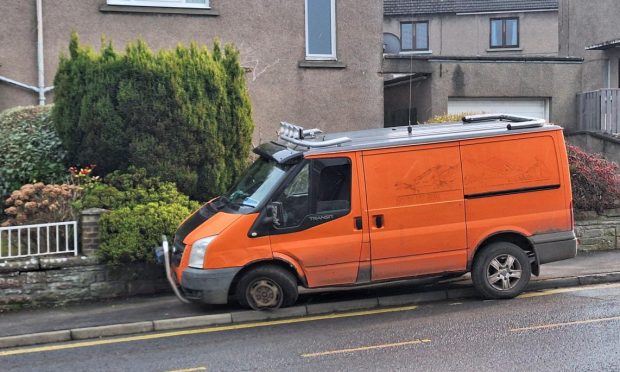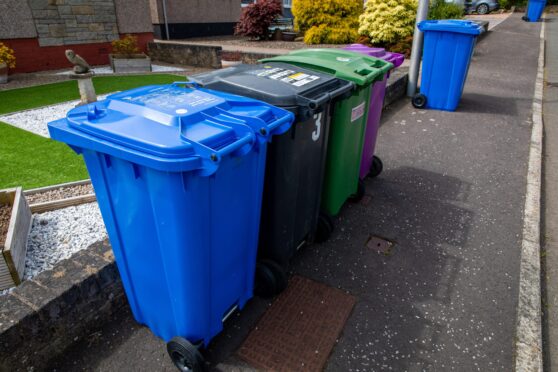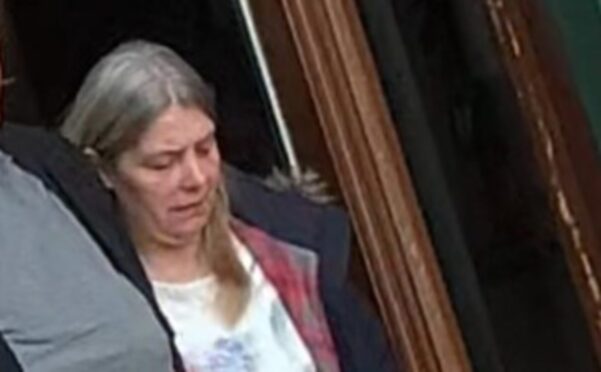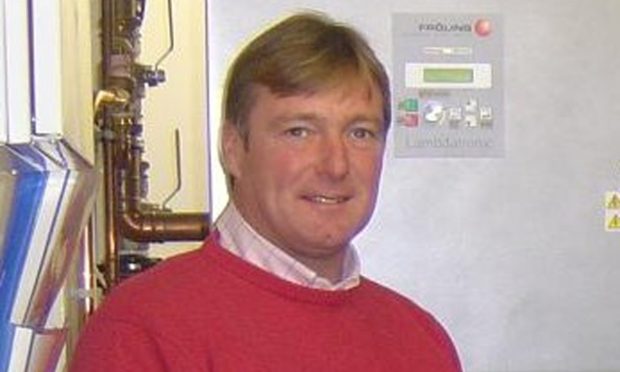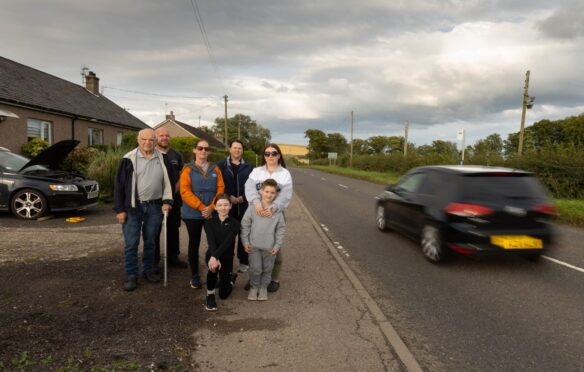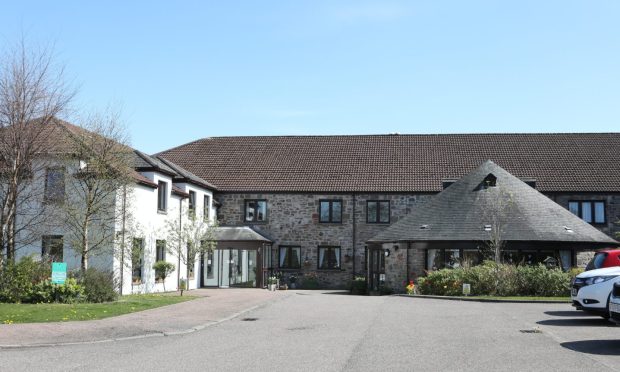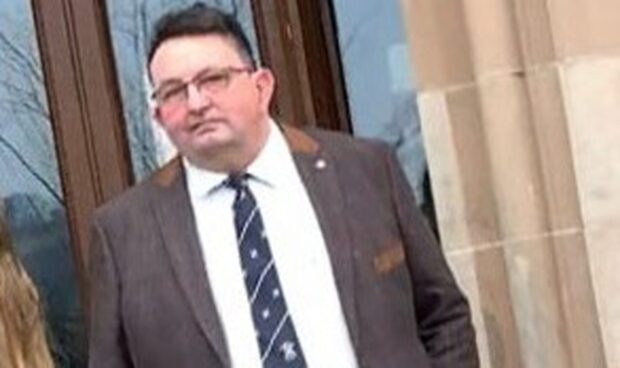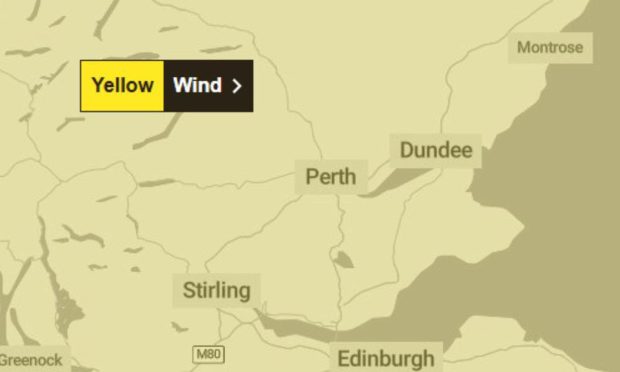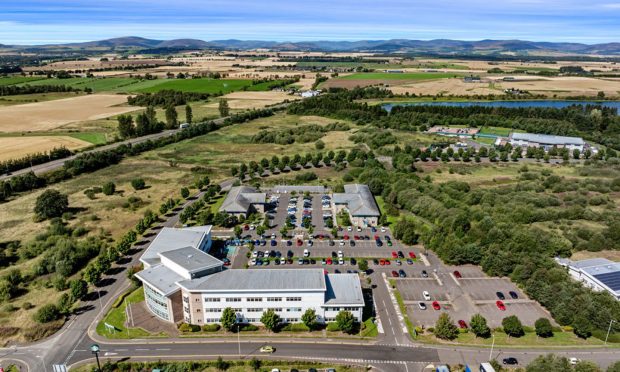It was a rail tragedy that cast a dark cloud over Angus.
Exactly 70 years ago today a bus carrying day trippers careered out of control on to a level crossing near Kirriemuir, where it was struck by a train passing at the exact same moment.
Ten people from Forfar died at Balmuckety crossing and the anniversary of the tragedy has been marked by an Angus historian.
David Orr, whose house overlooks the site of the crash, said many local people were affected by the accident and remember it still.
He said: “With the war hardly over, and many servicemen not yet demobbed, it was particularly poignant that tragedy should have struck the civilians of Kirriemuir and Forfar so abruptly on Thursday, July 25 1946.
“A bus belonging to a Forfar motor hirer had been on a tour up Glen Clova.
“On board were passengers, all from Forfar – husbands and wives, sisters, parents and children.
“As it approached the manned, signalled and gated level crossing at Balmuckety, it inexplicably failed to stop, crashing through the gates and coming to rest in the middle of the crossing.
“Tragically, that happened just as the 5.08pm train to Kirriemuir was steaming towards the station.
“It was travelling bunker first, and the bunker smashed in to the back of the bus, despite the valiant efforts of the experienced driver to apply the brakes and put the train into reverse.”
Mr Orr, whose father moved to the farm which bounds the railway line in 1944, wrote about the tragedy in his book the Denmill Diary.
Seven people were killed instantly in the collision and 17 others were injured.
Three of them died later in hospital, taking the death toll to 10.
He said: “All available doctors and ambulances were summoned, as fast as was possible at the time, to the scene from Forfar and Kirrie, even Dundee.
“The local police found dead and injured strewn along both sides of the railway track, and did whatever they could to relieve their suffering.
“The bus had been reduced practically to driftwood and its chassis had been dragged 40 or 50 yards along the track.”
As word spread round the town, people came down in their cars to see what they could do.
Some handed over their precious cans of rationed petrol to assist this task.
The dead included a married couple and two spinster sisters, and the injured included children, two seven-year-olds and one 10-year-old.
A young couple who were injured had been married only three weeks before, and were on the outing with the bride’s parents, who were the couple who died.
Mr Orr added: “The extent of this tragedy was such that it made headline news even in England.”
Arbroath councillor Bob Spink said the accident was “a perfect illustration of lack of care” and described it as “a sad and dreadful event”.
A Ministry of Transport official inquiry turned up serious faults on the coach and found its maintenance had been neglected.
It said the tragic accident could have been prevented had the vehicle been in a better mechanical condition
